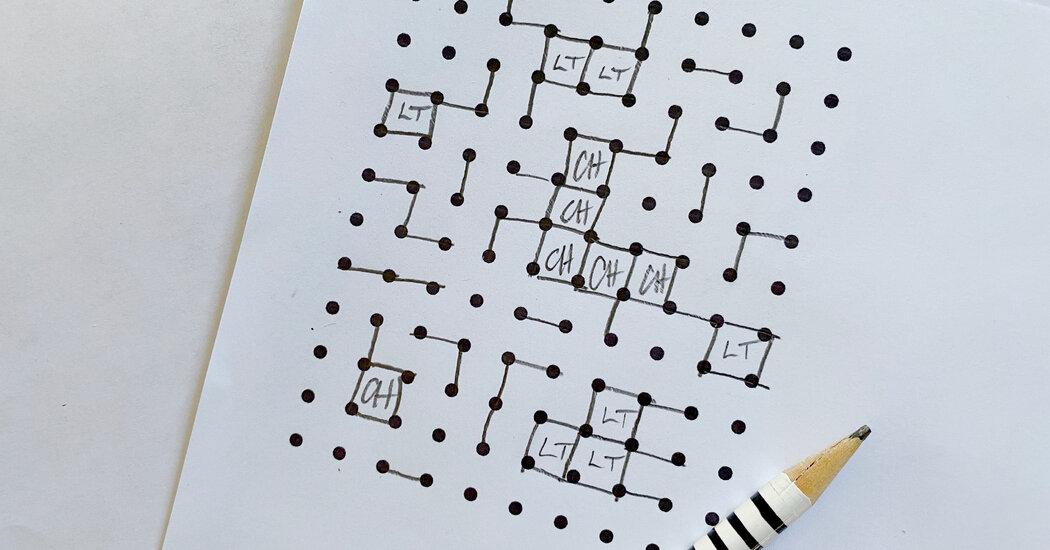
Dots and Boxes
First published in the 19th century by the French mathematician Édouard Lucas, Dots and Boxes was called La Pipopipette.
How to play
Two players take turns joining two horizontally or vertically adjacent dots by a line. The player who completes the fourth side of a square (i.e., a box) puts his or her initials inside and gets another turn. When all of the dots have been made into boxes, the player with the most boxes wins. You can download the game here and print to play.
Sim
Gustavus J. Simmons, a cryptographer and mathematician, invented this game in 1969.
How to play
Two players take turns tracing the gray lines between dots. One player uses one color ink or pencil, while the other uses another color. The first player who is forced to complete a triangle (with all three sides in his or her color) loses the game. Triangles must be formed with dots at each point; interior segments don’t count. You can download the game here and print to play.
Hex
The mathematician Piet Hein invented this game, originally called Con-tac-tix, in 1942, and John Nash (the subject of the film “A Beautiful Mind”) independently created his version in 1948. In 1952, Parker Brothers marketed its version and called it Hex.
How to play
The aim is to create a chain across the board, from black side to black side or gray side to gray side (the corner hexagons count for either direction). One player draws a solid dot and the other an open dot anywhere on the board. Players take turns marking empty hexagons with their dots. The winner is the first player to form a connected path (or chain) of dots linking the opposite sides of the board. You can download the game here and print to play.
